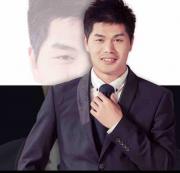《构建创新型组织的五个步骤》
《构建创新型组织的五个步骤》详细内容
《构建创新型组织的五个步骤》
Construction of Innovative Organization
构建创新型组织的五个步骤
(12课时,12 hours)
课程综述
本课程是清华大学MBA总裁班的精品课程,用一句话描述本课程,是“创新型组织的建设蓝图”。
Summary
This is a brand course of Tsinghua EMBA. To summarize this course in one sentence, is “the blueprint of innovative organization”.
课程导言
构建创新型组织,需要依次完成五个步骤,发现人才、组建团队、优化流程、调整结构、重塑文化(如下图所示)。完成了这五个步骤之后,创新的动力就由个人意志,升级为组织机制。以机制来驱动创新,这样的组织就是创新型组织。如何构建创新型组织?本课程围绕上述五个步骤,逐一阐述各个步骤的方法和要点。
Overview
To build an innovative organization, the following five steps need to be completed, namely, searching talents, teaming talents, optimizing processes, revising structures, and molding culture (as shown in the diagram below). After completing these five steps, the motivation for innovation is upgraded from personal will to organizational mechanism. Drive innovation by mechanism, such an organization is an innovative organization. How to build an innovative organization? Based on the above five steps, this course will elaborate on the detailed methods and knowhows of each one step.
课程收益
核心知识:学习该课程,学员能迅速了解创新型组织的特征、背景,以及构建创新型组织的步骤。
关键技能:学习该课程,学员能快速掌握构建创新型组织所需的技能,以及推进创新型组织的诀窍。
Benefits
Essential knowledge: In this course, you will understand the steps of building an innovative organization.
Critical skills: In this course, you will develop new skills for building innovative organization.
课程特色
案例教学:以丰富的案例,讲述构建创新型组织的六个步骤,让学员迅速理解创新型组织的核心知识。
情景演练:以精心的演练,让学员结合工作场景,演练相关技能,让学员迅速掌握构建创新组织的关键技能。
Features
Perceptible: By case study, this course provides a stereoscopic profile of the innovative organizations.
Practical: By scenario exercise, this course shapes skills of building innovative organizations.
内容目录
第一章 演化过程:创新的演化过程(1课时)
第二章 发现人才:发现创新型人才(2课时)第三章 组建团队:组建创新型团队(3课时)第四章 优化流程:优化创新型流程(2课时)
第五章 调整结构:调整创新型结构(1课时)第六章 塑造文化:塑造创新型文化(1课时)
第七章 执行要点:创新变革的推动(2课时)
Contents
Chapter 1 Tracking: Tracking the Evolution of Innovation (1 hour)
Chapter 2 Searching: Discovering Innovative Talents (2 hours)Chapter 3 Teaming: Building an Innovative Team (3 hours)
Chapter 4 Optimizing: Optimizing Innovative Process (2 hours)
Chapter 5 Revising: Adjusting the Innovative Structure (1 hour)
Chapter 6 Molding: Shaping an Innovative Culture (1 hour)
Chapter 7 Promoting: Implementing Innovative Reform (2 hours)
目标学员
成熟企业的中高层经理、创业公司的创始团队
Intended participates
Top managers of established companies, executive team of startup companies.
课堂形式
研习班,班级最佳人数为35人
Course format
Workshop, recommended number of class members is 35.
课堂练习
第一章的讨论:讨论成果,怎样分析公司的创新能力(15分钟)
第二章的演练:演练成果,怎样激活个人的创新能力(30分钟)
第三章的演练:演练成果,怎样组建一个创新型小组(30分钟)
第四章的演练:演练成果,怎样规划创导向的新流程(15分钟)
第五章的讨论:讨论成果,怎样设计创新导向的结构(30分钟)
第六章的讨论:讨论成果,怎样塑造创新导向的文化(15分钟)
第七章的演练:演练成果,怎样推动创新变革的进程(30分钟)
Classroom exercises
Discussion: the level of organizational innovation (15 minutes)
Rehearsal: activating personal innovation (30 minutes)
Rehearsal: operation of innovative team (30 minutes)
Rehearsal: Planning of innovative process (30 minutes)
Discussion: structure of innovative organization (15 minutes)
Discussion: culture of innovative organization (15 minutes)
Rehearsal: steps of building innovative organization (30 minutes)
课程进度
第一天 上午 9:00—12:00
第一章 演化过程:创新的演化过程
第二章 发现人才:发现创新型人才
第一天 下午 13:30—16:30
第三章 组建团队:组建创新型团队
第二天 上午 9:00—12:00
第四章 优化流程:优化创新型流程
第五章 调整结构:调整创新型结构
第二天 下午 13:30—16:30
第六章 塑造文化:塑造创新型文化
第七章 执行要点:创新变革的推动
Scheduling
1st Day, 9:00—12:00
Chapter 1 Tracking: Tracking the Evolution of InnovationChapter 2 Searching: Discovering Innovative Talents
1st Day, 13:30—16:30
Chapter 3 Teaming: Building an Innovative Team
2nd Day, 9:00—12:00
Chapter 4 Optimizing: Optimizing Innovative Process
Chapter 5 Revising: Adjusting the Innovative Structure2nd Day, 13:30—16:30
Chapter 6 Molding: Shaping an Innovative Culture
Chapter 7 Promoting: Implementing Innovative Reform
课程大纲
第一章 演化过程:创新的演化过程
课前思考:创新有什么规律和模式?
一 创新模式的演化
第一阶段的创新:天才主导,代表人物,达芬奇,1500年
第二阶段的创新:团队协作,代表人物,爱迪生,1876年
第三阶段的创新:要素重组,代表人物,熊彼特,1911年
第四阶段的创新:价值导向,代表人物,德鲁克,1985年
第五阶段的创新:范式颠覆,代表人物,克莱顿,1995年
二 创新型组织的构建步骤
发现人才:发现有创造力的人才,Searching
组建团队:组建创新导向型团队,Teaming
优化流程:引入创新导向型流程,Optimizing
调整结构:规划创新导向型结构,Revising
塑造文化:塑造创新导向型文化,Molding
小组练习1:讨论,怎样分析公司的创新能力
本章的教学目标:让学员了创新型组织的构建步骤。
Course outline
Chapter 1 Tracking: Tracking the Evolution of Innovation
Pre-training question: Are there any laws and patterns of innovation?
Evolution of innovation model
Genius-led stage, representative, Leonardo da Vinci, 1500
Teamwork stage, representative, Edison, 1876
Reorganization stage, representative figure, Schumpeter, 1911
Orientation stage, representative, Drucker, 1985
Disruptive stage, representative, Christensen 1995
Steps to build an innovative organization
Searching talents: find creative talents
Teaming talents: build an innovation-oriented team
Optimizing process: introducing innovation-oriented process
Revising structure: plan an innovation-oriented structure
Molding culture: Molding an innovation-oriented culture
Group exercise 1: Analyzing the level of organizational innovation
Benefits from this chapter: understanding the stages of building an innovative organization. 第二章 发现人才:发现创新型人才
课前思考:有创造力的人,有什么共同特征?
一 创造力的四种形式
基础:批判思维,发现问题,批判主义者
起步:改善能力,解决问题,改良主义者
飞跃:颠覆能力,发现机会,理想主义者
升华:迭代能力,长期聚焦,长期主义者
创造力的代表人物:乔布斯、达芬奇、伽利略
二 个人创造力的素质基础
感受捕捉能力:敏感,放大感受
专注思考能力:思考,寻找方案
情景推演能力:想象,尝试方法
积极行动能力:实践,投入行动
长期聚焦能力:优化,改进方案
三 创造力的甄选与培养
创造力测试:发现具有创造力的人才
培养创造力:培养具人创造力的人才
小组练习2:模拟,怎样激活个人的创新能力
本章的教学目标:让学员掌握的创新人才的发现和培养技巧。
Chapter 2 Searching: Discovering Innovative Talents
Pre-training question: What do creative people share in common?
Four forms of personal creativity
Critical thinking, problem discovery
Renovation ability, solving problems
Subverting ability, discovering opportunity
Iterative ability, long-term focus
Representatives: Steve Jobs, Leonardo da Vinci, Galileo Galilei
The trait basis of personal creativity
Feeling capture ability: amplifying feelings
Concentration ability: finding solutions
Motion imagination ability: imagining solutions
Executive ability: practice, acting as planning
Long-term focus ability: improving solutions
Selection and cultivation of creative talents
Testing creativity: finding creative talents
Cultivating creativity: training creative talents
Group exercise 2: How to activate personal creativity
Benefits from this chapter: mastering the selecting and training skills of innovative talents. 第三章 组建团队:组建创新型团队
课前思考:什么样的团队会有创造力?
一 创新型团队的必要特征
互动:成员的情绪互动,信任
互补:成员的思维互补,开放
互赖:成员的技能互赖,协作
二 创新型团队的工作方式
头脑风暴:众多观点的聚集
魔鬼建议:不同观点的冲击
活动复盘:过去活动的改善
模拟投标:未来活动的规划
经典案例:爱迪生实验室的团队协作
三 创新型团队的形式
职能团队:专业导向的长期团队
项目团队:解决问题的临时团队
专题团队:讨论问题的虚拟团队
小组练习3:模拟,怎样组建一个创新型小组
本章的教学目标:让学员掌握创新型团队的组建要领。
Chapter 3 Teaming: Building an Innovative Team
Pre-training question: What kind of team will be creative?
Necessary characteristics of an innovative team
Interaction: emotional interaction that builds trust
Complementary: members' thinking is complementary
Interdependence: members’ skills are interdependent
The way of working of innovative teams
Brainstorming: gathering of ideas
Devil’s Advocate: The Impact of different views
After action review: improvement of past activities
Mock bidding: planning for future activities
Classic case: Teamwork in Edison Lab
Three forms of innovative team
Functional team: a professional-oriented long-term team
Project team: temporary team to solve the problem
Thematic team: a virtual team to discuss issues
Group exercise 3: How to form an innovative team
Benefits from this chapter: mastering the essentials of forming an innovative team. 第四章 优化流程:优化创新型流程
课前思考:跨部门的工作怎么创新?
一 熊彼特的创新理论
要素细分:生产要素的持续细分
要素重组:生产要素的优化重组
二 流程要素
黑箱要素:经验操作、感觉描述、程度判断、期望推理
橱窗要素:程序操作、阈值描述、存在判断、逻辑推理
经典案例:福特汽车的流程创新
三 流程层面的创新
流程的梳理:了解要素的组织形式
流程的起点:改变流程的价值导向
流程的启动:改变流程的响应速度
作业的形式:改变作业的操作难度
判断的标准:改变判断的复杂程度
流程的联动:改变流程的联动效应
流程的刚性:改变流程的修订步骤
小组练习4:演练,怎样规划创导向的新流程
本章教学目标:掌握规划创新流程的关键技能。
Chapter 4 Optimizing: Optimizing Innovative Process
Pre-training question: How to innovate in cross-departmental work?
Schumpeter's theory of innovation
Factor breakdown: continuous breakdown of production factors
Factor reorganization: optimized reorganization of production factors
Process elements
Blac box elements: experience, description, judgment, expectation
Showcase elements: program, threshold, existence, reasoning
Classic case: Ford's process innovation
Innovation factors of process
Presenting of process: visualization of process elements
Start point: changing the orientation of process
Initiating of the process: changing the response speed of process
Assignment: changing the difficulty of tasks
Judgment: changing the complexity of judgment
Process linkage: changing the linkage of processes
Rigidity of process: changing the frequency of revision
Group exercise 4: How to design a creative process
Benefits from this chapter: mastering the key skills of planning an innovation process. 第五章 调整结构:调整创新型结构
课前思考:组织结构会不会影响创新?
一 什么是组织结构
目标分解:组织目标的分解过程
成果合并:单位成果的合并过程
二 组织结构的特征因素
形式因素:层级、线路、部门、朝向
效能因素:控制、适应、保障、创新
经典案例:通用汽车的结构创新
三 创新型结构的特征
作业制:创新的要素清晰
矩阵制:创新的团队组合
职能制:创新的专业基础
分部制:创新的价值导向
后台制:创新的系统保障
经典案例:诺基亚、苹果、谷歌,结构的差异
小组练习5:讨论,怎样设计创新导向的结构
本章教学目标:让学员理解组织结构对创新的影响。
Chapter 5 Revising: Adjusting the Innovative Structure
Pre-training question: Does the organizational structure affect innovation?
What is the organizational structure?
Goal decomposition: the decomposition of organizational goals
Achievement merging: the merging of unit achievements
Characteristic factors of organizational structure
Form factors: level, route, department, orientation
Effectiveness factors: control, adaptation, guarantee, innovation
Classic case: GM's structural innovation
Characteristics of innovative structure
Work system: the elements of innovation are clear
Matrix system: innovative team combination
Functional system: the professional foundation for innovation
Division system: innovative value orientation
Backstage system: innovative system guarantee
Classic cases: Nokia, Apple, Google, differences in structure
Group exercise 5: How to design an innovation-oriented structure
Benefits from this chapter: understanding the impact of organizational structure on innovation. 第六章 塑造文化:塑造创新型文化
课前思考:企业文化对创新有什么影响?
一 文化的因素
外显因素:口号、图标、故事、榜样、仪式
内隐因素:距离、假设、追求、偏好、取向
作用因素:觉察、认同、契约、归属、承诺
二 创新型文化的特征
崇尚平等:相信人格平等
尊重个性:尊重个体差异
追求质量:质量重于数量
敢于冒险:主动追求变化
注重长期:注重长期价值
经典案例:西南航空的文化变革
三 文化优化的方法
理念排序:文化理念的顺序排列
范式转化:理念行为的提取固化
小组练习6:讨论,怎样塑造创新导向的文化
本章教学目标:让学员理解创新型文化的核心特征。
Chapter 6 Molding: Shaping an Innovative Culture
Pre-training question: How does organizational culture affect innovation?
Cultural factor
Explicit factors: slogans, icons, stories, rituals
Implicit factors: distance, assumption, pursuit, preference
Affecting factors: awareness, identification, agreement, attribution
Characteristics of innovative culture
Advocating equality: Believing in equality of personality
Respect for individuality: respect for individual differences
Pursuing quality: quality is more important than quantity
Risk-taking: actively pursue change
Focus on long-term: focus on long-term value
Classic case: Southwest Airlines' cultural change
Method of shaping innovative culture
Sequencing of cultural ideas
Patterning of cultural behaviors
Group exercise 6: How to shape innovative culture
Benefits from this chapter: understanding the features of innovative culture. 第七章 执行要点:创新变革的推动
课前思考:怎样把公司变成创新型组织?
一 目标设定
预期:设定创新能力的目标
评估:评估创新能力的现状
二 认知升级
学习:管理人员的知识学习
培训:执行成员的技能培训
演练:执行成员的操作演练
三 推进步骤
人才盘点:盘点创新型人才
面试甄选:确定人才的标准
项目小组:执行团队的组建
流程优化:核心流程的优化
结构调整:结构调整的尝试
文化塑造:企业文化的重塑
小组练习7:模拟,怎样推动创新变革的进程
本章教学目标:让学员掌握构建创新型组织的关键操作。
Chapter 7 Promoting: Implementing Innovative Reform
Pre-training question: How to transform the company into an innovative organization?
Goal setting
Anticipation: setting goals for innovation
Evaluation: Assess the current state of innovation capabilities
Cognitive upgrading
Learning: knowledge learning of managers
Training: skill training for project team
Rehearsal: operational rehearsal of project team
Advancing steps
Talent inventory: inventory of innovative talents
Interview selection: searching for innovative talents
Project team: forming the project team
Process optimization: optimizing the core processes
Structural adjustment: adjusting organizational structure
Culture shaping: reshaping the corporate culture
Group exercise 7: How to create an innovative organization
Benefits from this chapter: mastering the key operations for building an innovative organization
刘向明老师的其它课程
《管理心理学:心理学在企业管理中的应用》 12.20
管理心理学:心理学在企业管理中的应用ManagementPsychology(6课时,6hours)课程推荐本课程被清华大学MBA总裁班评为最受欢迎的通识课程。用一句话评价本课程,是“用心理学的视角重新认识管理”。RecommendationThiscoursewasratedasthemostpopulargeneraleducationcoursebyT
讲师:刘向明详情
《人力资源战略的规划与实施》 12.20
FourDimensionsofHumanresourceStrategy人力资源战略的规划与实施(12课时,12hours)课程综述本课程是清华大学MBA总裁班的品牌课程,用一句话描述本课程,是“人力资源的战略地图”。RecommendationThisisabrandcourseofTsinghuaEMBA.Tosummarizethiscoursein
讲师:刘向明详情
《HR三支柱的规划与实施》 12.20
MeettheThree-pillarModelHR三支柱的规划与实施(12课时,12hours)课程综述本课程是清华大学MBA总裁班的好评课程,用一句话描述本课程,是“科技公司的HR蓝图”。RecommendationThisisahighlightingcourseofTsinghuaEMBA.Tosummarizethiscourseinonesent
讲师:刘向明详情
《赋能领导力:中高层经理赋能下级的六个步骤》 12.20
赋能领导力——中高层经理赋能下级的六个步骤(12课时,两天)课程推荐用一句话描述本课程,是“像玩打怪升级游戏一样,学会赋能”。课程背景彼得现象——无效勤奋:基层经理晋升到中层和高层,要转变工作重点,因为中层的首要职责,不是亲力亲为地处理事务,而是通过赋能,让下级能独当一面。不会赋能的中高层经理,工作越勤奋,越不胜任岗位,这种勤奋和职责背离的现象,叫做“彼得现
讲师:刘向明详情
- [杨建允]2024全国商业数字化技
- [杨建允]2023双11交易额出炉
- [杨建允]DTC营销模式是传统品牌
- [杨建允]探析传统品牌DTC营销模
- [杨建允]专家称预制菜是猪狗食,预
- [潘文富]为什么店家都不肯做服务
- [潘文富]厂家对经销商工作的当务之急
- [潘文富]经销商转型期间的内部组织结
- [潘文富]小型厂家的招商吸引力锻造
- [潘文富]经销商发展观的四个突破
- 1社会保障基础知识(ppt) 21255
- 2安全生产事故案例分析(ppt) 20330
- 3行政专员岗位职责 19114
- 4品管部岗位职责与任职要求 16373
- 5员工守则 15537
- 6软件验收报告 15460
- 7问卷调查表(范例) 15204
- 8工资发放明细表 14660
- 9文件签收单 14315





